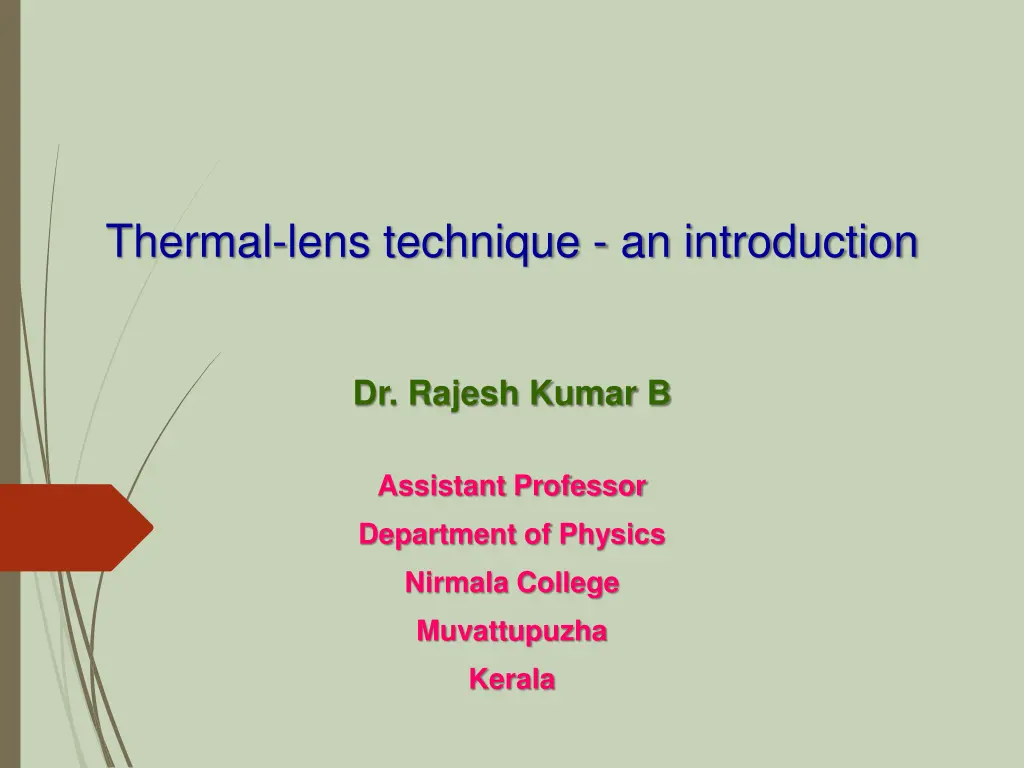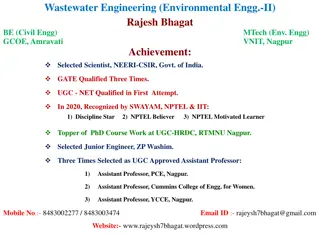
Introduction to Thermal Lens Technique in Physics
Learn about the principles and applications of the thermal-lens technique in physics, including how it works, advantages, and the setup involved. Discover how absorption of radiation leads to heat generation and the formation of a thermal gradient that acts as a lens. Explore the non-destructive and high-sensitivity aspects of this technique.
Download Presentation

Please find below an Image/Link to download the presentation.
The content on the website is provided AS IS for your information and personal use only. It may not be sold, licensed, or shared on other websites without obtaining consent from the author. If you encounter any issues during the download, it is possible that the publisher has removed the file from their server.
You are allowed to download the files provided on this website for personal or commercial use, subject to the condition that they are used lawfully. All files are the property of their respective owners.
The content on the website is provided AS IS for your information and personal use only. It may not be sold, licensed, or shared on other websites without obtaining consent from the author.
E N D
Presentation Transcript
Thermal-lens technique - an introduction Dr. Rajesh Kumar B Assistant Professor Department of Physics Nirmala College Muvattupuzha Kerala
Principle of Thermal-lens Technique Absorption of radiation results in the excitation of atoms or molecules Two pathways for de-excitations Radiative de-excitation Nonradiative de-excitation The nonradiative way of de-excitation results in the generation of heat in the sample 2
Thermal-Lens Technique In the thermal-lens (TL) technique the sample is illuminated by a Gaussian laser beam 3 The heat generated is strongest at the center of the beam because the beam intensity is strongest at that point. Consequently, a thermal gradient results between the center of the beam and the bulk material The thermal gradient in turn establishes a refractive index gradient. Owing to the gradient in the refractive index, the medium acts as a lens like optical element, Gaussian Laser Beam called thermal lens When a probe beam passes through the TL, it get diverged or focused depending upon the coefficient of refractive index with temperature For most liquids, the temperature coefficient of Probe beam refractive index, dn/dT is negative leading to Sample thermal blooming
Advantages of Thermal-lens Technique 5 High sensitivity Accuracy Minimum sample requirement Non-destructive Non-contact nature
6 Thank You Thank You






















